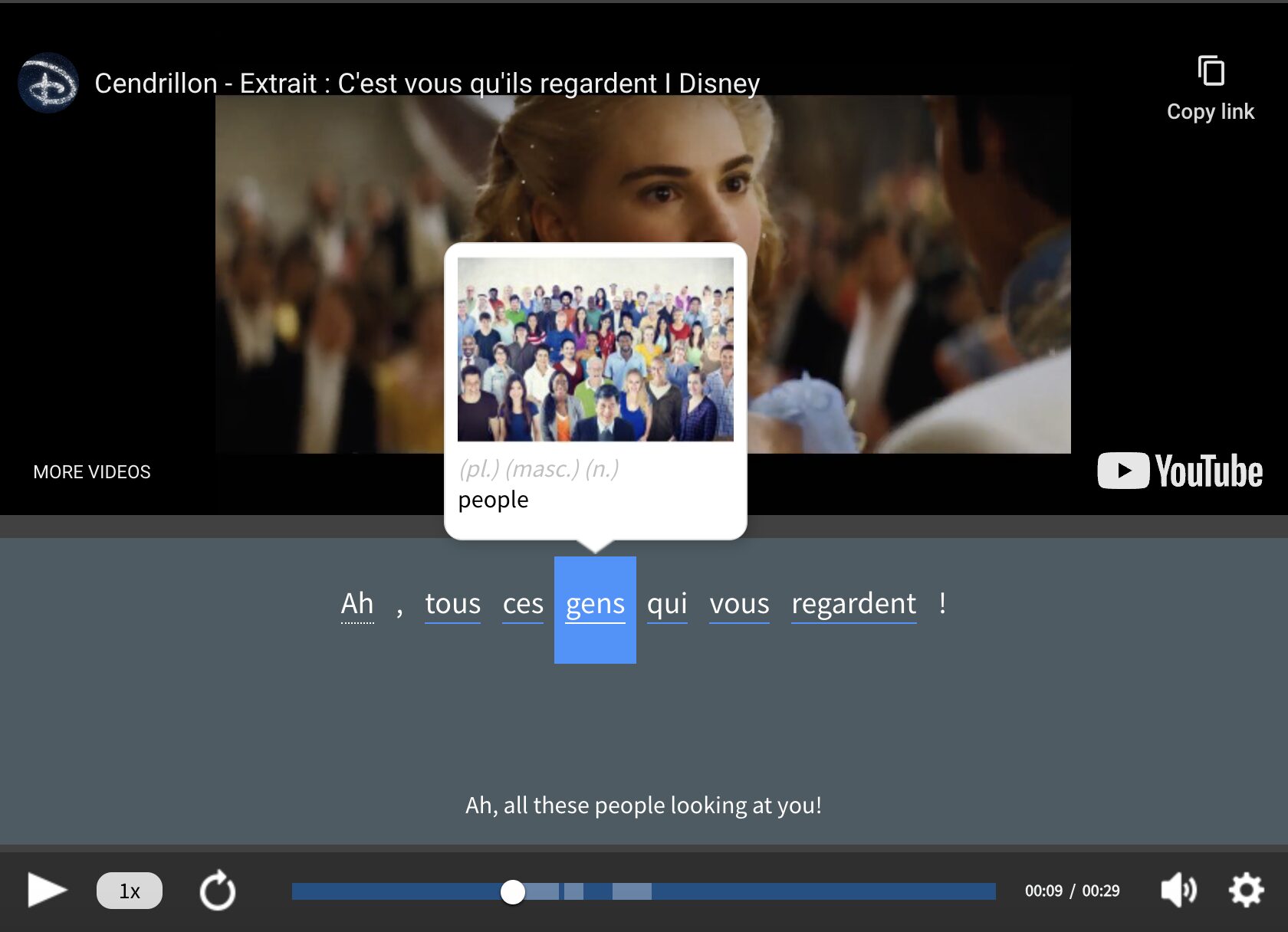“Il y a” in French: Pronunciation, Meaning and Usages [With Audio]

The French expression il y a is one of the most commonly used phrases in everyday conversation. Its main meaning is “there is” or “there are.”
As you start to consume French content and hear French conversations, you’ll see it popping up everywhere: It’s one of those very simple yet absolutely essential phrases to know. So let’s learn how to use il y a properly in different contexts including positive and negative sentences and questions.
Download: This blog post is available as a convenient and portable PDF that you can take anywhere. Click here to get a copy. (Download)
When Il y a Means “There Is” or “There Are”
The most common and well-known translation of il y a is “there is” or “there are.” Fortunately, il y a doesn’t change in most grammatical contexts. For once, the French counterpart is simpler than the English!
While we differentiate between singular (“there is”) and plural (“there are,”) il y a is used in both cases:
Il y a toujours un livre dans ma voiture. (There is always a book in my car.)
Il y a plusieurs étudiants internationaux à mon école. (There are several international students at my school.)
Even more good news: il y a doesn’t change for gender. Even if you’re talking about something feminine, you say il:
Il y a une robe sur le lit. (There is a dress on the bed.)
Il y a un gâteau sur la table. (There is a cake on the table.)
Il y a in other tenses
Although il y a never changes for number or gender, it may change depending on verb tense. The most common alternate forms to remember are il y avait (there were) and il y aura (there will be).
As you can see, you essentially need to conjugate the verb avoir (to have) in the third person and the tense you need.
Il y avait beaucoup de pluie pendant nos vacances. (There was a lot of rain during our vacation.)
Il y aura environ 200 personnes au mariage. (There will be about 200 people at the wedding.)
Common Constructions with Il y a
You’ll most often see il y a in one of these three constructions:
- Il y a + indefinite article + noun: Il y a une tache sur ma robe. (There’s a stain on my dress.)
- Il y a + number + noun: Il y a deux nouveaux restaurants dans notre ville. (There are two new restaurants in our town.)
- Il y a + indefinite adjective or pronoun: Il y a quelques personnes dans le parc. (There are a few people in the park.)
When Il y a Means “Ago”
Il y a is also commonly used when talking about time. Just include il y a, a period of time and some kind of action or event. This construction conveys the meaning of “ago”—how much time has elapsed since something has taken place.
For example:
Elle a dîné il y a deux heures. (She dined two hours ago.)
Il y a dix mois que j’ai déménagé à Chicago. (Ten months ago, I moved to Chicago.)
Il y a and the period of time may come before or after the main action. However, as in the second sentence, if il y a precedes the action, que must connect the two. To provide another example, the first sentence could be rephrased as:
Il y a deux heures qu’elle a dîné. (She dined two hours ago.)
Note that il y a is used with a completed action—something that’s already over and done with. She isn’t eating dinner right now—she finished two hours ago.
You can learn about the differences between depuis, pendant and il y a here.
Using Il y a for Distance and Direction
Although this usage is less common, il y a may also be employed to indicate how far away a place is. For example:
Il y a moins d’un kilomètre d’ici à la boulangerie. (It’s less than a kilometer from here to the bakery. *Literally: There’s less than a kilometer from here to the bakery.)
Il y a 490 kilomètres entre Paris et Strasbourg. (There are 490 kilometers between Paris and Strasbourg.)
Using Il n’y a pas for Negation
If il y a typically means “there is” or “there are,” then il n’y a pas means “there isn’t” or “there aren’t.”
Once you’ve been introduced to il y a, it isn’t hard to become familiar with il n’y a pas. Just remember the proper placement of n: il n‘y a pas.
Il n’y a pas de viande dans ce repas. (There’s no meat in this meal.)
Il n’y a pas de mensonges dans ce témoignage. (There are no lies in this testimony.)
Did you notice the use of de in both those sentences? Indefinite articles (un, une) and partitive articles (including de la, du, de l’ and des) become de when used with negation. Compare the first example above to its equivalent in the affirmative form:
Il y a de la viande dans ce repas. (There’s meat in this meal.)
While de la communicates the idea of “some,” de with ne… pas tells us that there’s absolutely no meat in the meal.
You might recall that there are several ways to make a sentence negative in French, each having a specific meaning, including:
• Ne… personne (No one, nobody)
• Ne… nulle part (Nowhere)
• Ne… jamais (Never)
• Ne… rien (Nothing)
• Ne… plus (Not anymore)
These are formed in the same way as il n’y a pas. Simply replace pas with the alternate word.
Il n‘y a personne là. (There’s no one there.)
Il n‘y avait rien à faire. (There was nothing to do.)
In this previous example, avoir is conjugated in the imperfect form (avait) because we’re talking about a past situation in which there was nothing to do. Despite this change, il and y remain the same.
Il y a in Questions
Y a-t-il is the inverted form of il y a that’s often employed in questions. The English equivalent would be “is there?” or “are there?”
Y a-t-il des cravates dans ce magasin ? (Are there ties in this store?)
Y a-t-il un médecin ici ? (Is there a doctor here?)
There’s another, simpler, way of asking a question with il y a: Est-ce qu’il y a…? (Is there/are there…?)
Est-ce qu’il y a un médecin ici ? (Is there a doctor here?)
The question means the same thing both ways. In the second one, we simply keep the normal il y a and add est-ce que (literally, “is it that”), which signals that we’re asking a question.
Here’s another example:
Est-ce qu’il y a un étudiant français dans ta classe ? (Is there a French student in your class?)
Now that you know about il y a and all its forms, make sure you practice it! Keep an eye out for this phrase as you read, watch or listen to French content, and see if you can identify its meaning according to the context.
For a bit more support, you can use a language learning program like FluentU which features authentic French videos with interactive subtitles, supplying contextual information on il y la and other phrases with just a tap.
FluentU takes authentic videos—like music videos, movie trailers, news and inspiring talks—and turns them into personalized language learning lessons.
You can try FluentU for free for 2 weeks. Check out the website or download the iOS app or Android app.
P.S. Click here to take advantage of our current sale! (Expires at the end of this month.)
Download: This blog post is available as a convenient and portable PDF that you can take anywhere. Click here to get a copy. (Download)
And One More Thing...
If you like learning French at your own pace and from the comfort of your device, I have to tell you about FluentU.
FluentU makes it easier (and way more fun) to learn French by making real content like movies and series accessible to learners. You can check out FluentU's curated video library, or bring our learning tools directly to Netflix or YouTube with the FluentU Chrome extension.
One of the features I find most helpful is the interactive captions—you can tap on any word to see its meaning, an image, pronunciation, and other examples from different contexts. It’s a great way to pick up French vocab without having to pause and look things up separately.
FluentU also helps reinforce what you’ve learned with personalized quizzes. You can swipe through extra examples and complete engaging exercises that adapt to your progress. You'll get extra practice with the words you find more challenging and even be reminded you when it’s time to review!
You can use FluentU on your computer, tablet, or phone with our app for Apple or Android devices. Click here to take advantage of our current sale! (Expires at the end of this month.)











